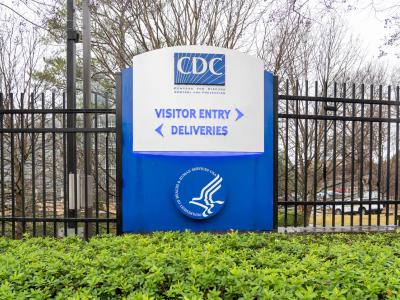A study conducted at hospitals in Michigan highlights the role that pharmacists can play in improving antimicrobial prescribing during transitions of care.
The study, published this week in JAMA Network Open, found that a pharmacist-led, multidisciplinary review of discharge planning for patients leaving the hospital with an antimicrobial prescription for an uncomplicated infection was associated with markedly improved antimicrobial prescribing. There was also a reduction in antimicrobial-associated harms following implementation of the program.
The study authors say the findings also highlight transitions of care—the movement of patients from one setting of care to another—as an important, and overlooked, focus of antimicrobial stewardship in hospitals.
"The findings of this quality improvement study suggest that leveraging resources to provide additional review and intervention on antimicrobial discharge therapies may lead to improvements in the quality and safety of antimicrobial prescriptions," they wrote.
Antimicrobial overuse at discharge
The quality improvement study, conducted at five hospitals in the Henry Ford Health System in southeastern Michigan from September 2018 through August 2019, evaluated a program that aimed to facilitate optimal oral antimicrobial prescribing at discharge by leveraging an existing pharmacy practice model for transitions of care with local antimicrobial use and duration guidelines.
In the intervention, which was implement in 17 distinct units at the five hospitals, clinical pharmacists worked with primary care teams to identify patients set to be discharged with an antimicrobial prescription, determine those who may be eligible to complete the antimicrobial course with oral therapy after discharge, and provide other recommendations to optimize therapy. The methods varied slightly between academic medical center and community hospital settings.
While few antimicrobial stewardship interventions target the discharge process, previous studies indicate it's an area of concern. In a 2020 study conducted at 46 hospitals in Michigan, among more than 21,000 patients treated for pneumonia or urinary tract infections, nearly half (49.1%) had antibiotic overuse at discharge—defined as either unnecessary antibiotic use, prolonged duration, or suboptimal fluoroquinolone use. The primary takeaway from that study was that antibiotic overuse after discharge is a common problem that's influenced by prescribing culture and physician behavior and needs to be addressed by antimicrobial stewardship programs.
To evaluate the effectiveness of the intervention in the new study, Henry Ford Health System researchers, in collaboration with the Centers for Disease Control and Prevention, analyzed adult patients at the five hospitals who had urinary tract, respiratory, skin and other soft-tissue, and intra-abdominal infections and were prescribed antimicrobials at discharge.
The primary end point was the frequency of optimized antimicrobial prescriptions at discharge. Health system guidelines were used to evaluate optimal therapy.
Five times higher rate of optimal prescribing
Of the 800 patients prescribed antimicrobials at discharge (400 pre-intervention, 400 post-intervention), the most common diagnoses were pneumonia (33%), upper respiratory tract infection and/or acute exacerbation of chronic obstructive pulmonary disease (26.8%), and urinary tract infection (25.4%). Patients in the post-intervention group were more than five times more likely to have an optimal antimicrobial prescription than those on the pre-intervention group (time-adjusted generalized estimating equation odds ratio, 5.63; 95% confidence interval [CI], 3.69 to 8.60).
The increase in optimized prescribing at discharge in the post-intervention period was seen in both the academic (37.4% absolute increase; 95% CI, 27.5% to 46.7%) and community hospital (43.2%; 95% CI, 32.4% to 52.8%) settings. Reductions in prolonged durations of therapy (44.2% pre-intervention vs 37 9.2% post-intervention; mean difference, −35.0%), non–guideline-concordant antimicrobial selection (20.2% vs 6.0%; mean difference, −14.3%) and treatment of asymptomatic bacteriuria (9.2% vs 2.5%; mean difference, −6.8%) were the largest contributing components of improved discharge prescribing.
"Using pharmacists to reinforce institutional protocols, we were able to successfully target and modify the following areas of antimicrobial optimization: minimization of unnecessary antimicrobial days from prolonged durations and patients without infections; avoidance of therapies that are excessively broad, not concordant with local guidance, or targeted toward pathogens that are not susceptible to the antimicrobial; and transitioning from intravenous agents to accessible and affordable oral options as soon as possible," the authors wrote.
There were no differences in unadjusted analyses for clinical resolution, readmission at 30 days, or mortality. Fewer severe antimicrobial-related adverse events were identified in the post-intervention period (3.2%) compared with the pre-intervention period (9%) (time-adjusted generalized estimating equation odds ratio, 0.40; 95% CI, 0.18 to 0.88).
The authors say the findings highlight the crucial role that pharmacists play in optimizing antimicrobial prescribing at discharge.
"The synergistic relationships between prescriber and pharmacist in antimicrobial stewardship programs facilitate better care and services," they wrote.
























